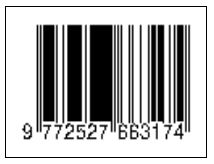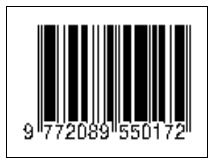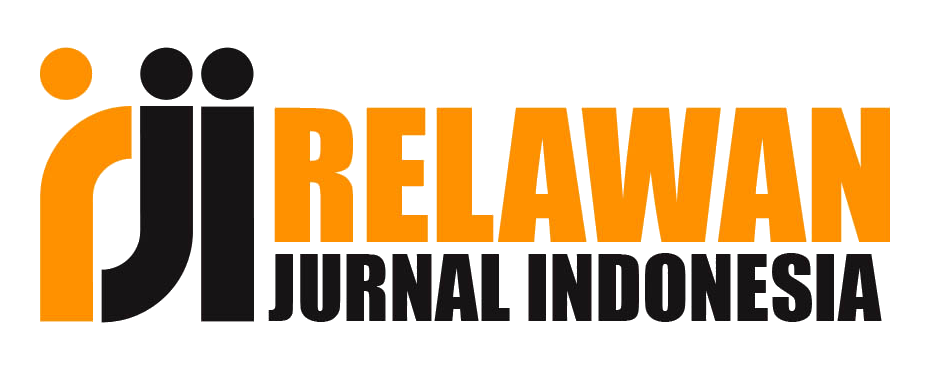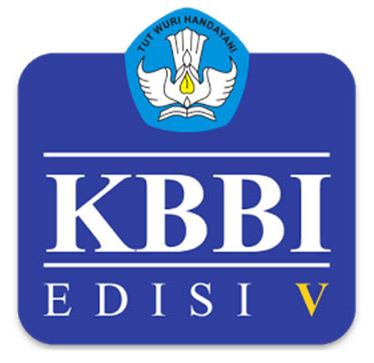Peran Ekspektasi Kinerja, Ekspektasi Usaha, Pengaruh Sosial, dan Kondisi yang Mendukung terhadap Perilaku Pengguna Itqan Mobile yang Dimediasi oleh Niat Perilaku Menggunakannya
(1) Universitas Padjadjaran
(2) Universitas Padjadjaran
(3) Universitas Padjadjaran
(*) Corresponding Author
Abstract
Keywords
Full Text:
PDFReferences
Aaron, M., Rivadeneyra, F., & Sohal, S. (2017). Fintech: Is This Time Different? A Framework for Assessing Risks and Opportunities for Central Banks. Bank of Canada Staff Discussion Paper, 10(July). Canada: Bank of Canada.
Abbasi, M. S., Chandio, F. H., Soomro, A. F., & Shah, F. (2011). Social influence, voluntariness, experience and the internet acceptance: An extension of technology acceptance model within a south-Asian country context. Journal of Enterprise Information Management, 24(1), 30–52. https://doi.org/10.1108/17410391111097410.
Afshan, S., & Sharif, A. (2015). Acceptance of Mobile Banking Framework in Pakistan. Telematics and Informatic, 33(2), 43-48.
Ajzen, I. (1991). The theory of planned behavior. Organizational Behavior and Human Decision Processes, 50(2), 179–211. https://doi.org/10.1016/0749-5978(91)90020-T.
Akbar, C. (2013). Posisi Hukum BMT Dinilai Sudah Semakin Jelas. Hidayatullah, 17 April. Diakses dari https://www.hidayatullah.com/berita/read/2013/01/08/65279/posisi-hukum-bmt-dinilai-sudah-semakin-jelas.html.
Alalwana, A. A., Dwivedib, Y. K., & Ranab, N. P. (2017). Factors influencing adoption of mobile banking by Jordanian bank customers: Extending UTAUT2 with trust. International Journal of Information Management, 37(3), 99-110.
Altawallbeh, M., Thiam, W., Alshourah, S., & Fong, S. F. (2015). Do the Instructors Differ in Their Behavioral Intention to Adopt E-Learning Based on Age, Gender, and Internet Experience? Journal of Education and Practice, 6(18), 41–50.
Arikunto, S. (2016). Prosedur Penelitian: Suatu Pendekatan Praktik. Jakarta: Rineka Cipta.
Auliani, P. A. (2018). Geliat Fintech di Era Industri 4.0. Kompas, 24 Oktober. Diakses dari https://ekonomi.kompas.com/read/2018/10/18/144300126/geliat-fintech-di-era-industri-40?page=all.
Baptista, G., & Oliveira, T. (2015). Understanding mobile banking: The unified theory of acceptance and use of technology combined with cultural moderators. Computers in Human Behavior, 50(1), 418–430.
BMT Itqan (2018). Laporan RAT Tahun Buku 2019. Diakses 24 Oktober 2019 dari http://bmtitqan.org/pencapaian /detail/7/laporan-rat-tahun-buku-2019.html.
Davis, F. D., Bagozzi, R. P., & Warshaw, P. R. (1992). Extrinsic and Intrinsic Motivation to Use Computers in the Workplace. Journal of Applied Social Psychology, 22(14), 1111–1132. https://doi.org/10.1111/j.1559-1816.1992.tb00945.x.
DeGennaro, A. J. (2010). Application of multiple intelligence theory to an elearning technology acceptance model. ProQuest Dissertations and Theses, 252.
Douglas W, A., Barberis, J., & Buckley, R. P. (2015). The Evolution of FinTech: A New Post-Crisis Paradigm? University of Hong Kong Faculty of Law Research Paper No. 2015/047.
Farah, M. F., Hasni, M. J. S., & Abbas, A. K. (2018). Mobile-banking adoption: Empirical evidence from the banking sector in Pakistan. International Journal of Bank Marketing, 36(7), 12-20. https://doi.org/10.1108/IJBM-10-2017-0215.
Ghozali, I. (2016). Aplikasi Analisis Multivariate dengan Program IBM SPSS 23 (edisi ke-8). Semarang: Badan Penerbit Universitas Diponegoro.
Gupta, K. P., Manrai, R., & Goel, U. (2019). Factors influencing adoption of payments banks by Indian customers: Extending UTAUT with perceived credibility. Journal of Asia Business Studies, 13(2), 173–195. https://doi.org/10.1108/JABS-07-2017-0111.
Hamrul, H., Soedijono, B., & Amborowati, A. (2013). Mengukur Kesuksesan Penerapan Sistem Informasi Akademik (Studi Kasus Penerapan Sistem Informasi STMIK Dipanegara Makassar). Seminar Nasional Informatika 2013 (SemnasIF), 140–146.
Hanel, A. (1989). Organisasi Koperasi: Pokok-pokok Pikiran Mengenai Organisasi Koperasi dan Kebijakan Pengembangannya di Negara-negara Berkembang (Universitas Padjadjaran, Ed.).
Hartoyo, A. (2019). Menyongsong Perkembangan BMT di Indonesia. Solopos, 24 Oktober. Diakses dari https://sharianews.com/posts/menyongsong-perkembangan-bmt-di-indonesia.
Hasan, E. F. (2017). Indonesia dan Halal LifeStyle. Islampos, 17 April. Diakses dari https://www.islampos.com/indonesia-dan-halal-lifestyle-2982.
Huda, N., & Heykal, M. (2010). Lembaga Keuangan Islam. Jakarta: Kencana.
Im, I., Seongtae, H., & Myungsoo, K. (2011). An international comparison of technology adoption: Testing the UTAUT model. Journal Information and Management, Hansung University, 48(1), 1–8. https://doi.org/10.1016/j.im.2010.09.001.
Islam, M. S., Karia, N., Khaleel, M., Fauzi, F. B. A., Soliman, M., Khalid, J., Mamun, A. Al. (2019). Intention to adopt mobile banking in Bangladesh: An empirical study of emerging economy. International Journal of Business Information Systems, 31(1), 1–16.
Kautonen, T., Luoto, S., & Tornikoski, E. T. (2010). Influence of work history on entrepreneurial intentions in “prime age” and “third age”: A preliminary study. International Small Business Journal, 28(6), 583–601. https://doi.org/10.1177/0266242610368592.
Kwateng, K. O., Atiemo, K. A. O., & Appiah, C. (2018). Acceptance and use of mobile banking: An application of UTAUT2. Journal of Enterprise Information Management, 32(1), 118–151. https://doi.org/10.1108/JEIM-03-2018-0055.
Laukkanen, T., & Pasanen, M. (2008). Mobile banking innovators and early adopters: How they differ from other online users? Journal of Financial Services Marketing, 13(2), 86–94. https://doi.org/10.1057/palgrave.fsm.4760077.
Mamman, M., Ogunbado, A. F., & Abu-Bakr, A. S. (2016). Factors Influencing Customer’s Behavioral Intention to Adopt Islamic Banking in Northern Nigeria: A Proposed Framework. IOSR Journal of Economics and Finance, 7(1), 51–55. https://doi.org/10.9790/5933-07135155.
Martins, C., Oliveira, T., & Popovic, A. (2014). Understanding the Internet Banking Adoption: A Unified Theory of Acceptance and Use of Technology and Perceived Risk Application. International Journal of Information Management, 34(1), 1–34.
Oliveira, T., Thomas, M., & Baptista, G. (2016). Mobile payment: Understanding the determinants of customer adoption and intention to recommend the technology. Computers in Human Behavior, 61(1), 404–414. https://doi.org/10.1016/j.chb.2016.03.030.
Otoritas Jasa Keuangan (2019). Statistik Perbankan Syariah. Diakses pada 5 November 2019 di https://ojk.go.id/id/kanal/syariah/data-dan-statistik/statistik-perbankan-syariah/Default.aspx.
Pituch, K. A., & Lee, Y.K. (2006). The influence of system characteristics on e-learning use. Computers and Education, 47(2), 222–244. https://doi.org/10.1016/j.compedu.2004.10.007.
Purnomo, H. (2018). Indonesia Kini Punya Payung Hukum Aturan Fintech. CNBC Indonesia, 17 April. Diakses dari https://www.cnbcindonesia.com/tech/20180901144740-37-31329/indonesia-kini-punya-payung-hukum-aturan-fintech.
Rahman, A. (2015). Toward a comprehensive conceptualization of digital divide and its impact on e-government system success. Advances in Business Marketing and Purchasing, 23(1), 291–488. https://doi.org/10.1108/S1069-096420150000023003.
Ridwan, M. (2004). Manajemen Baitul Maal Wat Tamwil (BMT). Yogyakarta: UII Press.
Sakti, A. (2013). Pemetaan Kondisi dan Potensi BMT: Kemitraan dalam Rangka Memperluas Pasar dan Jangkauan Pelayanan Bank Syariah kepada Usaha Mikro. Al-Muzara’ah, 1(1), 1–18. https://doi.org/10.29244/jam.1.1.1-18.
Salama, S. C. U. (2018). Babak Baru BMT di Indonesia. Medcom, 24 Oktober. Diakses dari https://www.medcom.id/ekonomi/analisa-ekonomi/5b2VgYvb-babak-baru-bmt-di-indonesia.
Schleife, K. (2010). What really matters: Regional versus individual determinants of the digital divide in Germany. Research Policy, 39(1), 173–185. https://doi.org/10.1016/j.respol.2009.11.003.
Sekaran, U. & Bougie, R. (2017). Metode Penelitian untuk Bisnis Pendekatan Pengembangan Keahlian. Jakarta: Salemba Empat.
Shidiq, S. (2016). Ushul Fiqh. Jakarta: PT Intimedia Cipta Nusantara.
Sipior, J. C., Ward, B. T., & Connolly, R. (2011). The digital divide and t-government in the United States: Using the technology acceptance model to understand usage. European Journal of Information Systems, 20(3), 308–328. https://doi.org/10.1057/ejis.2010.64.
Soemitra, A. (2010). Bank dan Lembaga Keuangan Syariah. Jakarta : Kencana.
Sugiyono. (2017). Metode Penelitian Kuantitatif, Kualitatif, dan R&D. Bandung: CV Alfabeta.
Suharsih. (2019). OJK Sebut Pasar Fintech Syariah Masih Besar, Ini Alasannya. Solopos, 24 Oktober. Diakses dari https://www.solopos.com/ojk-sebut-pasar-fintech-syariah-masih-besar-ini-alasannya-1012604.
Tarhini, A., El-Masri, M., Ali, M., & Serrano, A. (2015). Extending the UTAUT model to understand the customers’ acceptance and use of internet banking in Lebanon: A structural equation modeling approach. Journal of Information Technology & People. 29(4), 1-20. https://doi.org/10.1108/ITP-02-2014-0034.
Taylor, S., & Todd, P. A. (1995). Extending the UTAUT model to understand the customers’ acceptance and use of internet banking in Lebanon: A structural equation modeling approach. Information Systems Research, 29(4), 144–176. https://doi.org/10.1287/isre.6.2.144.
Uly, Y. A. (2018). Indonesia Harus Manfaatkan Digitalisasi Dorong Ekonomi dan Keuangan Syariah. Okezone, 24 Oktober. Diakses dari https://economy.okezone.com/read/2018/12/12/20/1990262/indonesia-harus-manfaatkan-digitalisasi-dorong-ekonomi-dan-keuangan-syariah.
Vallerand, R. J., Deshaies, P., Cuerrier, J. P., Pelletier, L. G., & Mongeau, C. (1992). Ajzen and Fishbein’s Theory of Reasoned Action as Applied to Moral Behavior: A Confirmatory Analysis. Journal of Personality and Social Psychology, 62(1), 98–109. https://doi.org/10.1037/0022-3514.62.1.98.
Venkatesh, V. (2000). Determinants of Perceived Ease of Use: Integrating Control, Intrinsic Motivation, Acceptance Model. Institute for Operations Research and the Management Sciences, 11(4), 342–365.
Venkatesh, V., Davis, F. D., Morris, M. G., & Davis, G. B. (2003). User Acceptance of Information Technology: Toward a Unified View. MIS Quarterly, 27(3), 425.
Venkatesh, V., Thong, J.Y.L. & Xu, X. (2012). Consumer Acceptance and Use of Information Technology: Extending The Unified Theory of Acceptance and Use of Technology. MIS Quarterly, 36(1), 157–178.
Warsame, M. H., & Ireri, E. M. (2018). Moderation effect on mobile microfinance services in Kenya: An extended UTAUT model. Journal of Behavioral and Experimental Finance, 18(1), 67–75. https://doi.org/10.1016/j.jbef.2018.01.008.
Zhou, T., Lu, Y., & Wang, B. (2010). Integrating TTF and UTAUT to explain mobile banking user adoption. Computers in Human Behavior, 26(4), 760–767. https://doi.org/10.1016/j.chb.2010.01.013.
DOI: https://doi.org/10.30588/jmp.v10i1.655
Article Metrics
Abstract view : 1327 timesPDF - 103 times
Refbacks
- There are currently no refbacks.
Copyright (c) 2020 Chairia Chairia, Citra Sukmadilaga, Indri Yuliafitri

This work is licensed under a Creative Commons Attribution 4.0 International License.

Jurnal Maksipreneur: Manajemen, Koperasi, dan Entrepreneurship is licensed under a Creative Commons Attribution 4.0 International License.
Based on a work at http://ejournal.up45.ac.id/index.php/maksipreneur.
Jurnal Maksipreneur: Manajemen, Koperasi, dan Entrepreneurship has been indexed/archived by:




Journal of Maksipreneur: Management, Cooperative, and Entrepreneurship (JMP)
Organized by Management Department, Universitas Proklamasi 45, Yogyakarta, Indonesia
Published by Universitas Proklamasi 45, Yogyakarta, Indonesia
Email: [email protected] | [email protected]











